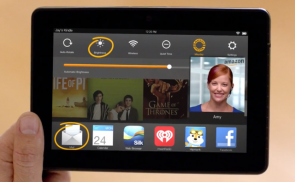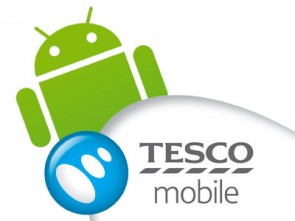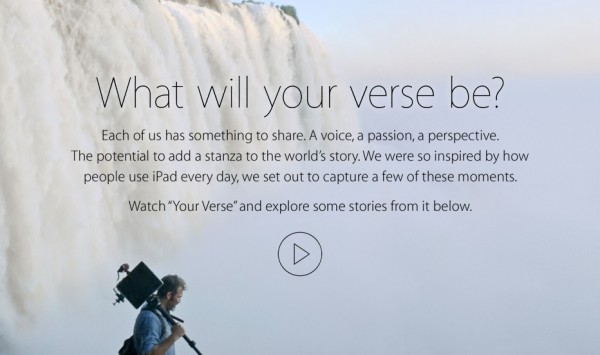Grey matters
Digital Branding: native or nomad?
 Digital is no longer a mere tool. As online and offline merge, it has become a continuous experience. Successful brands use the digital platform to build a near-personal relationship with their consumers, while those falling behind consider digital to be static fragment. In a nutshell, Digital Branding is the characterisation of the spirit behind the brand.
Digital is no longer a mere tool. As online and offline merge, it has become a continuous experience. Successful brands use the digital platform to build a near-personal relationship with their consumers, while those falling behind consider digital to be static fragment. In a nutshell, Digital Branding is the characterisation of the spirit behind the brand.
The importance of a human tone
Although rooted in the user’s experience, digital is all too often morphed into an impersonal entity that robs us of simple yet gratifying everyday human interactions. Fearing that we’re consigned to a future of communication with shiny, faceless screens, it’s no wonder that the successful brands are those that have forged a personable identity in the digital realm. Interbrand’s Jez Frampton agrees, stating that “the brands people choose are the ones that resonate with who they are and what they hold dear.”
So, where’s some solid evidence of this? Look no further than HMV. At its peak, the high street megastore was valued at roughly £1 billion and had more than 400 outlets around the world. January 2013, however, saw the chain plunge into administration.
How did things go so drastically wrong? In a 2002 board meeting, marketing specialist Philip Beeching cited two of the three biggest threats to HMV as online retailers and downloadable music. He wasn’t wrong: nowadays, more than 70% of music and video is bought online. Failing to adapt to a changing environment, HMV missed their chance to establish a personable, memorable tone online.HMV failed to adapt to a changing environment
Launching your business online does not guarantee success, though. If you’re still in the mindset that you’re simply displaying your product in a different medium, think again. The tone conveyed on your website far outweighs what you’re actually selling. You wouldn’t approach someone face to face and simply hold up a product, would you? You would use your personality to charm this person, finding ways to make them believe that you can relate to one another. The tone conveyed far outweighs what you’re actually selling
In an online context, the brands that appear awkward and unnatural in this space are the ones lacking these all-important social skills. Their successful competitors have manipulated the online aspect of their business into a personality. Consequently, they appear entirely at ease and established on this platform. Digital natives, as it were.
Bigger isn’t always better
Achieving a personable brand identity is not an easy feat. Spare a moment to consider the effect Digital Branding has on big brands in comparison to their smaller competitors. Smaller brands are like the alternative underdogs that everyone likes to support: their size allows them to retain a sense of authenticity and friendliness.
Smaller brands are like the alternative underdogs that everyone likes to support
Bigger brands, however, run the risk of appearing impersonal. All too easily, they can appear like clunky Tory frontbenchers trying to get “down with the kids”. What’s more, these brands often hesitate over taking bold social media risks, fearing the potentially damaging effects on their reputation.
Nevertheless, social media can be an extremely effective way for big brands to reveal a personality. Unlikely hero Tesco Mobile has profited from the importance of creating a human interface through their recent #nojoke Twitter campaign. Employing creative agency Jam to build on the social media aspect of the company, perceptions of Tesco Mobile have been transformed virtually overnight, with witty tweets creating a very likeable persona. Daniel Deeks-Osburn, a brand manager at Jam, says: “The #nojoke campaign was launched to change perceptions about Tesco Mobile… By creating content that’s authentic to the brand and consumer, we’re creating a story people want to engage with. That’s true brand advocacy.”
One of these tweet stories started with customer Ricardo Esposito tweeting Tesco Mobile, informing them that his friend was mocking the network provider. Tesco Mobile replied in an unexpected way, deciding that “She’s clearly going through a rough time in life.” Tesco Mobile had a Twitter party with Jaffa Cakes, Yorkshire Tea and Cadbury
Things escalated, and a Twitter party with Jaffa Cakes, Yorkshire Tea and Cadbury ensued. This story alone achieved 11,000 retweets, demonstrating how a likeable tone developed through effective Digital Branding can significantly alter perceptions of a brand’s profile. Most importantly, Tesco Mobile has successfully constructed a personality, without appearing to have done so.
Adapt to your users’ needs

Kindle’s Constant Contact shows a willingness to support users’ needs.
While creating an infectious personality may involve taking risks, demonstrating a clear willingness to adapt to your users’ needs is not so challenging. Successful Digital Branding positions the brand as that chirpy but supportive best friend who pops over with freshly baked goods to see if there’s anything more they can do for you. You do lead such a busy life, after all. “People’s lives don’t revolve around your brand, they revolve around life
As Mike Arauz claims, nowadays “People’s lives don’t revolve around your brand, they revolve around life.”
Amazon’s one-click delivery, Kindle’s Constant Contact Guide and Tesco’s scheme whereby customers shop from their phone all demonstrate the importance of facilitating users’ needs.
We recently produced some creative for Aquaterra Leisure that focuses on this idea of showing related content when it’s relevant. Users will increasingly check class times from their mobile phones, so we devised an effective strategy to communicate key information. Digital Branding enabled Aquaterra to combine a personable brand identity with a highly effective user experience.

Our work for Aquaterra Leisure shows related content when it’s relevant.
Apple: Digital Natives
Having pinpointed the likes of HMV to drive home the negative impact of ignoring Digital Branding, which companies are optimising their use of digital and consequently reaping the benefits? The list is long, but Amazon, Kickstarter, ASOS and Kindle have developed notably personable and consistent online identities.
Apple have created the perfect model for combining a personable brand face with seamless user experience. While the products themselves continually strive to enhance user experience with their technological innovations, this is far from Apple’s sole focus. Reaching into the human psyche, Apple facilitates dreams.
Apple underplays the iPad as being a mere tool
Take a cursory glance at the online site, and you’ll instantly see how the iPad is underplayed as an effective tool to assist the more important aspect of logging treasured memories. Asking the viewer “What will your verse be?” welcomes creative participation within this Apple community to build up a story. Placing such emphasis on this enables Apple to convey a human, relatable tone.
Compare Apple’s website to that of their competitors, HP, and there is a strong distinction. The HP site makes it very clear that you are being sold a functional, competitively-priced product. The only glimpse of a personality is the awkward “check ‘em out” icon – a miserable attempt to appear young and hip. If you want numbers, HP gives you plenty with impressive-sounding technology and percentage savings. Sorry if it’s dreams you’re after – you’ll need to go elsewhere.
HP’s site makes it very clear that you are being sold a functional, competitively-priced product
Back to Apple, and the consistency across both the online platform and physical stores is striking. The culture of sharing is enforced with the staff to customer ratio, creating a personable technological hub. The stores offer numerous spaces that invite people to sit down, reiterating a sense of community. Through this clearly developed branding strategy, customers are able to build up trust and consider Apple as an experience as well as a product provider.
Physical stores must offer a truly unique experience
While we are in fact a very PC-friendly agency, comparing Apple’s strategy to that of competitors Currys or PC World reveals a sharp distinction. Setting foot in one of these stores is a somewhat intimidating and frustrating experience.
The products loom overhead, inaccessible without the aid of a staff member. But where are these enigmas to be found? After the hunt around the store comes to an end and the staff member somewhat grudgingly asks what you’re interested in, you spend the next few minutes firing questions at them. Apologies to anyone who works in these stores, but these people don’t ever seem particularly enthused with the product. After around 10 minutes, your time slot appears to be up as the next vexed customer grapples for the staff member’s attention.
This begs the question: does an impersonal approach present the product as inaccessible and therefore more valued, or does it simply turn the customer off? Samsung openly desire to replicate Apple’s famous retail experience
As companies such as Samsung openly desire to replicate Apple’s famous retail experience and CEO of Amazon, Jeff Bezos, has stated he’ll only open physical stores if they offer a truly unique experience, Apple’s highly personable technique is one to learn from.
A recent article in Forbes supports this, deciding that the in-store experience needs to be changed “by using data-driven marketing insights to empower employees. The employees will then treat shoppers the way they want to be treated: as individuals with unique buying behaviours and preferences”.
Give the user a unique experience
Online clothing store ASOS is another key player when understanding the importance of engaging with the customer and offering an experience, rather than simply displaying a product. ASOS claims to “always keep the customer at the heart of any new web initiatives [and] produce an online fashion experience like no other.” The site’s range of sections demonstrates this and daily fashion tips and style guides posits ASOS’ persona as that of a fashion enthusiast, eagerly inviting others to share their tips.
ASOS’ persona is that of a fashion enthusiast, eager to share
The store’s technique is evidently working; while many high street retailers have struggled to bounce back from the recession, this organisation has gone from strength to strength with revenue from the latter part of 2013 up by 50%. If true brand values are being successfully conveyed and online shopping provides an easier service, the shift from offline to online is unsurprising.
Battle of the banks
In the financial sector, banks are competing to offer the most exceptional digital experience to draw and keep customers’ loyalty. Demand for access to online banking continues to grow and more customers rely on smartphones for managing their finances. Banks and other financial service companies must therefore ensure that transactions are easy to perform and that the cross-channel customer experience is as seamless as possible.
Furthermore, personal financial planning websites are becoming increasingly popular. With consumers no longer requiring a live person as their financial advisor, an integral and consistent online experience is rendered all the more important.
“Pingit” implies both friendliness and efficiency
Banks such as Barclays have adapted extremely quickly to the digital realm and the opportunities it brings. Launched in 2012, Barclays’ Pingit app allows users to transfer money globally with a mobile phone. This was the first app of its kind in the UK and won numerous awards, demonstrating Barclays’ forward-thinking and innovative approach. Notably, Barclays veered away from a corporate sounding name for their app. “Pingit” appeals to a wide range of users through evoking an animated-sounding personality, implying both friendliness and efficiency.
Tapping into the importance of app development, we recently designed an HTML 5 app for Imperial College Business School. As students receive iPads at the start of their course and communicate via the Business School’s “hub”, the app covers a multiplatform environment. The app has been a great success and received 90,000 hits from the approximate 700 users involved in the first month alone. Effective Digital Branding both enhances user experience and strengthens the rapport between the creator and the user.
The future
Having explored the essential aims of Digital Branding and the exciting ways in which these have been implemented so far, it seems highly unlikely that the future will be as estranged from the “human touch” as some would propose. Rather, the brands that fail to build a relationship with their consumer will struggle. So, what can we expect from the future?
The brands that fail to build a relationship with their customer will struggle
It’s predicted that most cars of the future will run on electric power, leaving scope to experiment with their engine noise. Companies are already considering which sounds reflect their brand identity; Daimler opts for a “sonorous purring”, Mercedes for huskier tones and Renault give power to the people with a variety of sounds.
Wearable technology is also pushing the boundaries of the imagination; sensory books tell you how to feel when reading (can we not feel for ourselves?), and an LED mood sweater externalises your feelings. In Hong Kong, Katia Vega is developing smart eyelashes and fingernails that can complete every day actions like opening doors or flicking through TV channels. The aim? The answer remains the same: to merge our digital and physical realities, creating a single, unified experience that is tailored to our particular needs.
Wearable technology is pushing the boundaries of the imagination
Since its advent, Digital Branding (and the more general advancement of technology) repeatedly draws on one thing: a fascination with what engages people. Have you created a digital brand persona that resounds with the user? Will they want to bookmark the page for later? Combining an effective user experience with a strong brand character is a recipe for success.
As we progress, Digital Branding continues to bridge the gap between the future and the heritage of the human psyche. Maybe one day the two will become so intertwined that considering them independent of one another would be laughable.
Until that day, let’s remember that the person on the other side of the screen doesn’t want to be interacting with an uninspiring, unrecognisable entity. Give them a personality they can relate to.












